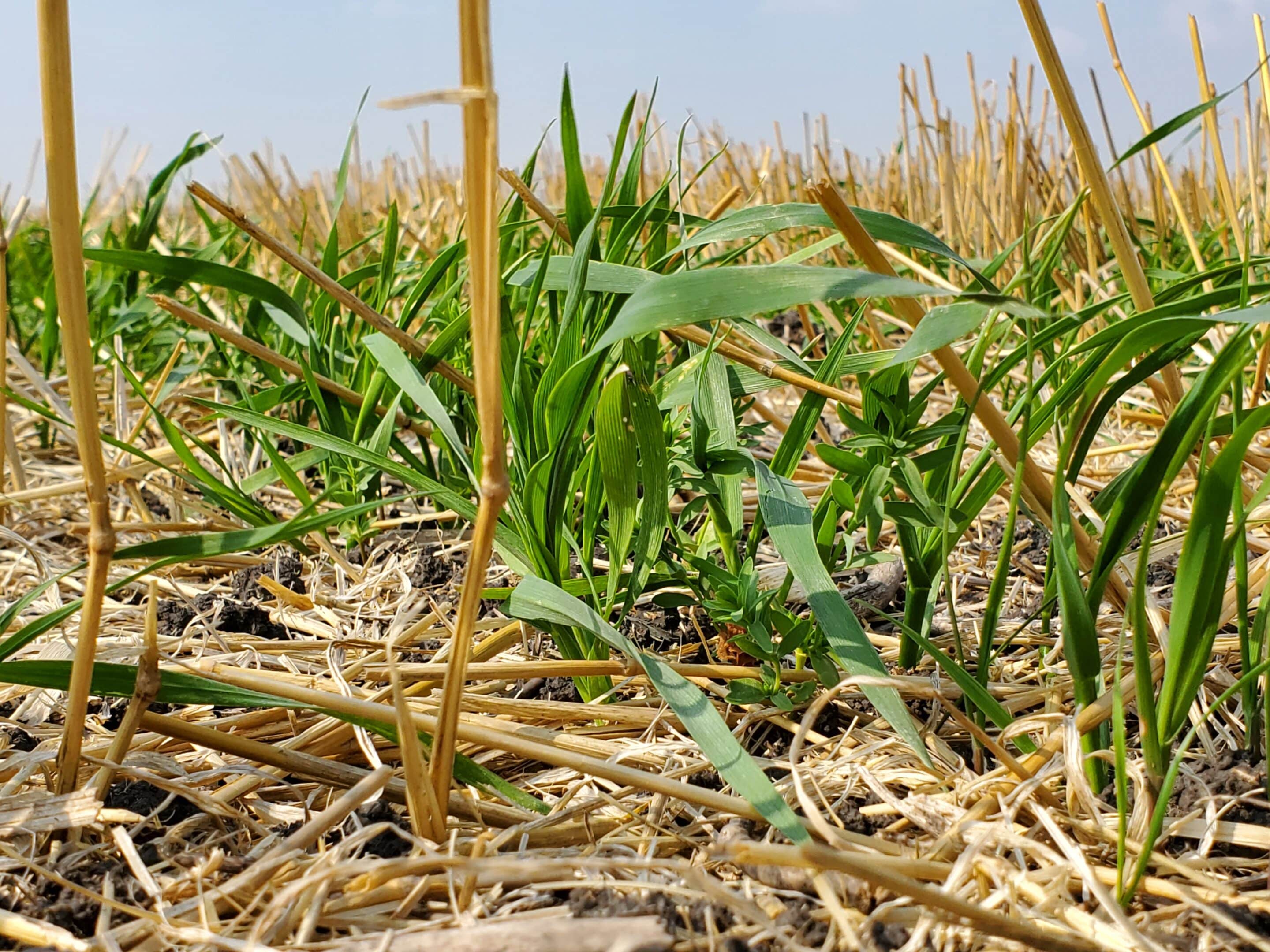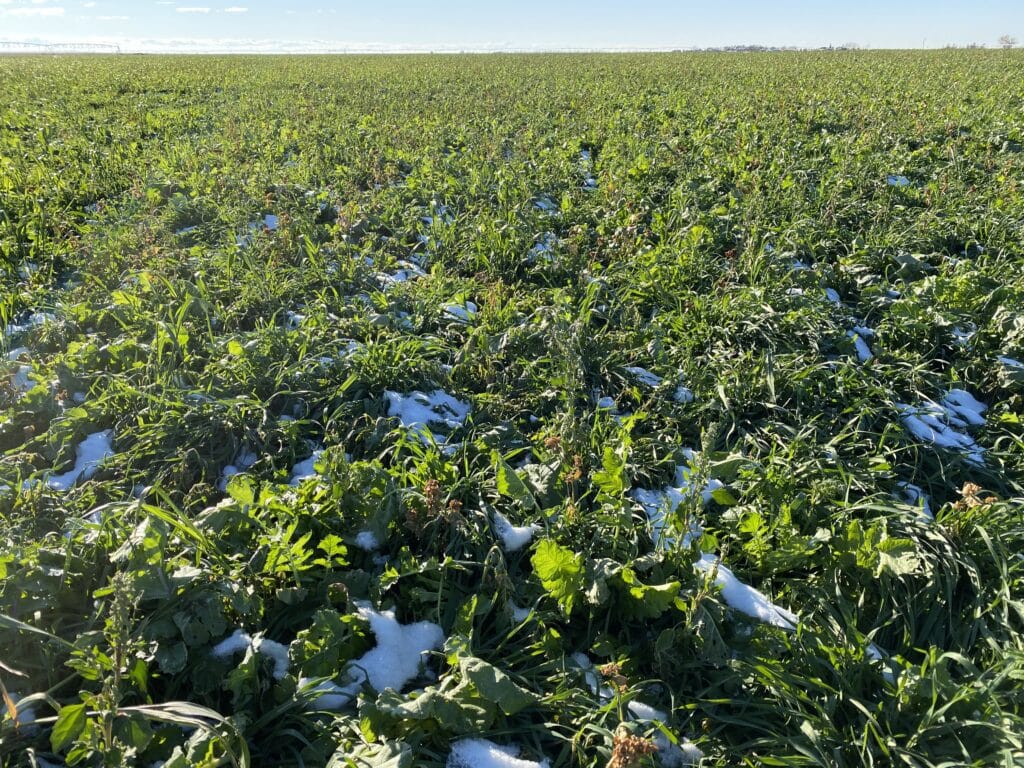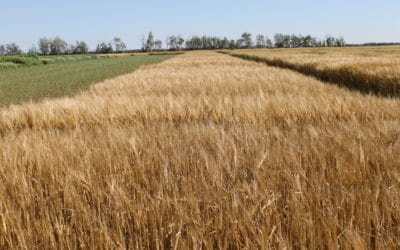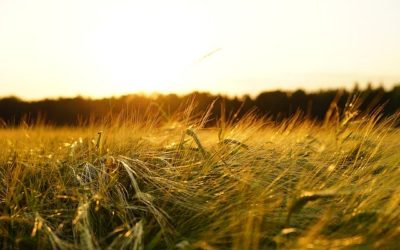Interest in cover crops is growing in Alberta as farmers look for ways to save their soil.
As farmers in Alberta try to stop their soils from blowing away, cover crops have quickly become a solution. While the interest is mainly coming from farmers in the southern portion of the province where Chinook winds steal topsoil every year, there’s also starting to be more interest amongst farmers further north.
“You have to look at what you’re wanting out of (cover crops). And that’s where it really should be targeted to the areas of the field that are the most needed or particular fields or after particular crops,” Scott Gillespie says in a Zoom interview.
Gillespie, a regenerative ag consultant with Plants Dig Soil Consulting Ltd. based in Taber, Alta. has found the farmers he works with are mainly interested in cover crops for erosion control or holding soil in place. However, he’s found that over the long-term farmers who adopt cover cropping find the biggest impact on their soil is that they help with water infiltration by holding more water in place assisting with drought mitigation.
“It might help to capture a little bit more snow or take in an intensive rain a lot quicker. In different soils zones, when you’re in black soil zones, or even the dark brown ones, like in central Alberta up into Edmonton area, then in most years you’re going to be able to recharge it, you’re going to get some something back from it,” he explains.
However, planting cover crops isn’t always the best economic choice on paper. Gillespie says the economics for cover crops isn’t straight forward. When looking at the economics you need to consider all that you’re getting back for planting a cover crop, and while it may not be a direct return on investment the benefits that your soil receives make it worth it.
“If you’re looking at spending, even $20 an acre, that would be probably your minimum just in terms of applying them and seed but it could get easily get a lot more than that. So you have to think of how much are you actually getting out of that,” he says.

A crop of volunteer barley growing in potato hills in the fall prior to potato production. Photo: Scott Gillespie
There are options when it comes to cover crops and statistics show more farmers in Alberta are becoming interested in cover cropping.
Western Canada Cover Crop Survey
A cover cropping survey completed by the University of Manitoba (U of M) in 2020 showed that interest in cover cropping is on the rise in Alberta, following a trend happening across Western Canada.
There were 281 farmers who grow cover crops from across the three Prairie provinces surveyed, with 86 coming from Alberta — the majority of those were located in the southern portion of the province. A preliminary survey was completed in 2019 with a full survey happening in 2020, and results published in 2021. The survey was co-ordinated by Yvonne Lawley, assistant professor in the department of plant science at the U of M, and Callum Morrison, a master of science student at the U of M.

Yvonne Lawley, a professor at the University of Manitoba, is doing research on cover crops across the Canadian Prairies. Photo: Yvonne Lawley.
The basic statistics on cover crops for Alberta from the survey included:
- 84 per cent of respondents grew a full season cover crop
- 37 per cent of respondents grow shoulder season cover crops
- Barley was the top cover crop grown in Alberta
- The most common cover crops planted in Alberta include clovers, oats, and peas
- Across the Prairies 53 per cent of farmers purchased their cover crop seed from a specialized dealer
- One third of farmers on the Prairies grow their own cover crop seed
The data also showed that a lot of farmers in Alberta are making cover crop blends to grow. While 30 per cent of farmers across the Prairies were growing just one species of cover crops, 27 per cent grew mixes of two to three species.
“As we went further west in the provinces, we saw more things like farmers were more likely if they were going to be sowing a short season cover crop to start it earlier as an inter-crop. Part of that might have been to get around some of the moisture issues in the fall that we would experience in those regions,” Morrison says in a Zoom interview.
For the most part, farmers across the Prairies are similar in their cover cropping practices, further east though that isn’t the case. There was also a survey done of farmers in Ontario, which is where Morrison and Lawley noticed changes. In Ontario, farmers primarily plant winter wheat and red clover.
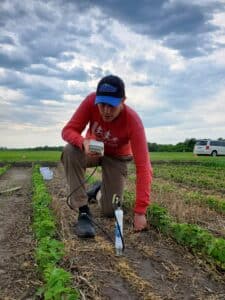
University of Manitoba PhD student Callum Morrison taking soil moisture readings at a soybean plot in a long-term cover cropping experiment in Carman, Man. Photo: Chamara Weerasekara
“I’d say that would be one of the main trends towards Alberta, is that just a lower percentage of our respondents grew short season cover crop,” Morrison adds.
Lawley found that the data showed farmers who are early adopters of cover crops, are fairly representative of cover cropping practices across the Prairies.
“What are the windows that farmers have to put that shoulder season cover crop in? Or what crop do they follow if they’re going to be growing a full season cover crop for grazing? And so that’s where we see sort of the regional differences between the different provinces and sort of what are the most dominant crops in those rotations that are short,” she says in a Zoom interview.
The survey also found that 80 per cent of Prairie farmers are planting cover crops in order to build their soil health. When looking closer at how farmers are doing that it was found they’re focusing on increasing soil organic matter and keeping living roots in the soil.
Finding Cover Crop Seed in Alberta
At Stamp Seeds in Enchant, Alta. they sell cover cropping seeds. The seed growers started selling them as they wanted to give farmers, along with themselves, different options to enhance soil health and combat the soil erosion that is common in southern Alberta.
“In southern Alberta here, we have a big problem with wind erosion. And that’s kind of why a lot of guys have started getting into it, they’ve started to see their topsoil blown away, and have started to realize that there is ways to combat this,” Blair Balog, seed sales specialist with Stamp Seeds, explains in a phone interview.
Stamp Seeds sells a variety of cover crop seed options, ranging from the more traditional options such as barley, oats, winter wheat, fall rye and fall triticale to more speciality crops. Speciality cover crops include buckwheat, various clover types, radishes, and faba beans. Balog adds that you can do a blend with some of these cover crops, such as mixing a clover and radish together, which will enhance your soil health.
Stamp Seeds produces the traditional cover crop seeds themselves, and work with Imperial Seed in Manitoba to bring in some of the more specialty seeds to sell.
Balog says usually the supply of cover cropping seed is pretty good in Alberta, but he does recommend farmers to plan ahead if they want to plant cover crops.
“Planning and ordering ahead means there’s less risk and less decisions made based on what’s available. If you plan ahead, we can find what best fits for each farmer and each timeline. Depending on when they want to seed it, if it’s let’s say a late fall, then there’s certain types of crops that we know that we’ll be able to get in that will be able to get enough growth,” he adds.
Stamp Seeds works with farmers to try and find a cover cropping option that will work best for them,” Balog says.
Header photo — An oat, canary seed and flax cover crop in Rosenfeld, Man. Photo: Chamara Weerasekara
Related Articles
Reining in Unruly Mother Nature
The Seed Industry is a Family Business for Greg Stamp
Organic and Conventional Farming Aren’t as Different as You Think


